Baobab coffee is an amazing, healthy coffee alternative – naturally low in caffeine, loaded with antioxidants, and rich in healthy fats, vitamins, and minerals. It’s traditionally made from roasted organic baobab seeds.
If you’ve ever made baobab juice, you know the routine: scoop the pulp, mix it with water, strain it, and chuck the seeds. We used to do the same… until we found out those little seeds can be roasted into the most flavorful, delicious coffee. Now, not a single one goes to waste.
In this post, we’ll talk about what makes baobabs so remarkable, exactly how to make baobab coffee from the seeds, the science-backed benefits, why roasting matters, how to brew the perfect cup, and how to store it so it stays fresh. My guess? You’ll never toss a baobab seed again.
The majestic baobab trees and a cup of baobab coffee
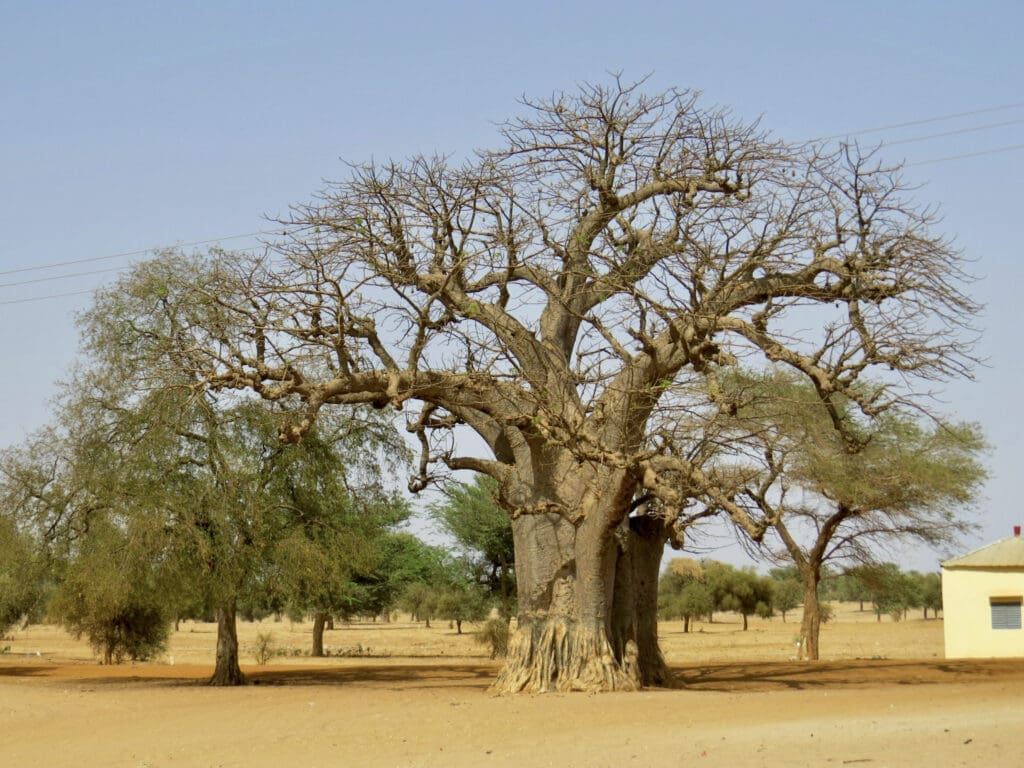
Rising from the African savanna like an ancient monument, the baobab tree (Adansonia digitata) is endemic to sub-Saharan Africa and Western Madagascar. It’s one of the oldest trees on earth, with an almost mythical presence. Some specimens are believed to be over 2.500 years old, and their swollen trunks store thousands of litres of water to survive the long, dry months.
With branches stretching like roots into the sky, the baobab is often called the “upside‑down tree,” but for the people living in its shadow, it’s a sacred giant, a living pharmacy, and a spiritual centre of village life. In some places, it’s believed a baobab can hold the spirit of an ancestor, so you’d never cut one down without a blessing.
Sadly, despite their resilience, baobabs are now considered endangered in parts of Africa, threatened by climate change, habitat loss, and human activity.
Baobab trees bloom for only one night with magnificent white flowers that get pollinated by bats and moths. It can take 8 to 23 years before a young baobab tree makes its first fruit, but once it starts, it can grow more than 250 big, velvety pods a year.
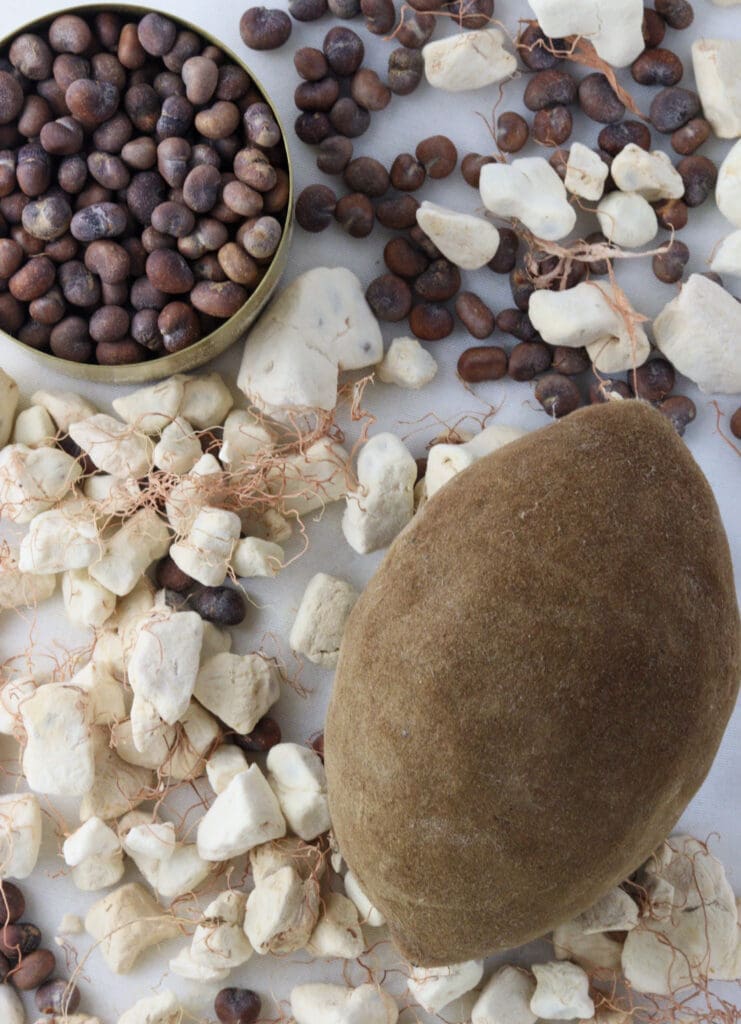
When harvest time comes, people use long sticks to knock down the dried pods or gather them from the ground. Inside the hard shell is a tangy, citrus‑like pulp wrapped around shiny seeds. Nothing goes to waste — the pulp is ground into the super‑nutritious baobab powder, the seeds are dried and roasted for coffee or added to soups and ground into sauces, the leaves are cooked like spinach, and the bark is stripped for rope and mats.
While most recipes often use baobab fruit powder from the pulp, to make the famous superfruit baobab juice, refreshing baobab smoothie and creamy no-churn baobab ice cream, tasty desserts like baobab bites, gluten-free baobab energy bars and lemon‑kissed baobab cookies, the baobab seeds often get overlooked…. and today, we’re giving these a moment of fame. We’re roasting them into a rich, tasty cup of baobab coffee.
Hopefully, next time you’re soaking up that baobab pulp, you’ll think twice before tossing them — and give this healthy, magical brew a try instead!
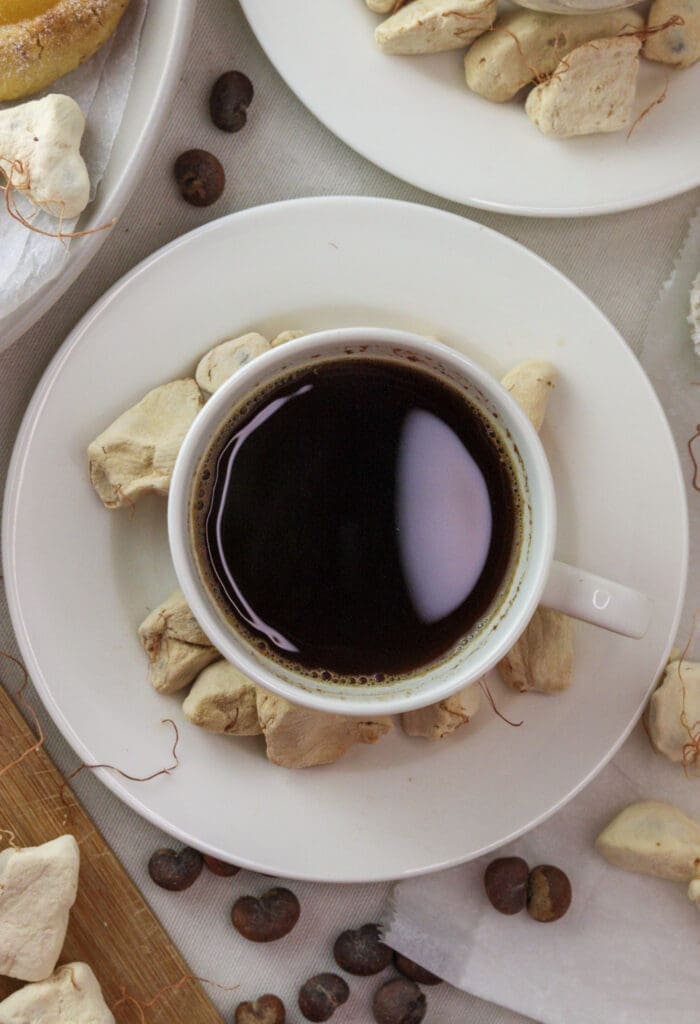
Benefits of drinking baobab coffee
It’s packed with antioxidants. Roasting baobab seeds even boosts the total phenolic content in baobab coffee up to 851 mg GAE/100 g. The phenolic compounds in baobab coffee are linked to heart health, anti‑inflammatory effects, and protecting cells from oxidative stress.
It supports cell health. Baobab coffee contains vitamins A, C, E, and D3, plus phytosterols and minerals that play a role in cell regeneration and slowing age‑related decline.
It’s exceptionally low in caffeine. With only ~16–21 mg caffeine per 100 g, it’s dramatically lower than regular coffee (over 1,100 mg) and even decaf (about 123 mg), making it a great option for caffeine‑sensitive people. This means you have no worries when drinking it in the evening.
It contains heart‑friendly fats and minerals. Baobab coffee offers a good dose of healthy fats like oleic and linoleic acid, plus calcium, potassium, magnesium, and iron for cardiovascular, bone, and muscle health.
It’s organic. Most coffee you find on the shelves has been sprayed, treated, and processed, but baobab trees thrive naturally in the wild. That makes baobab seed coffee a pure, chemical‑free brew straight from nature.
Unlike the Little Prince, who imagined baobab seeds as a danger to his tiny planet, many people in Africa use them as a gift of nature. Roasted and brewed, these seeds become a source of income for families, helping to keep money in the community while also supporting the conservation of these magnificent trees.
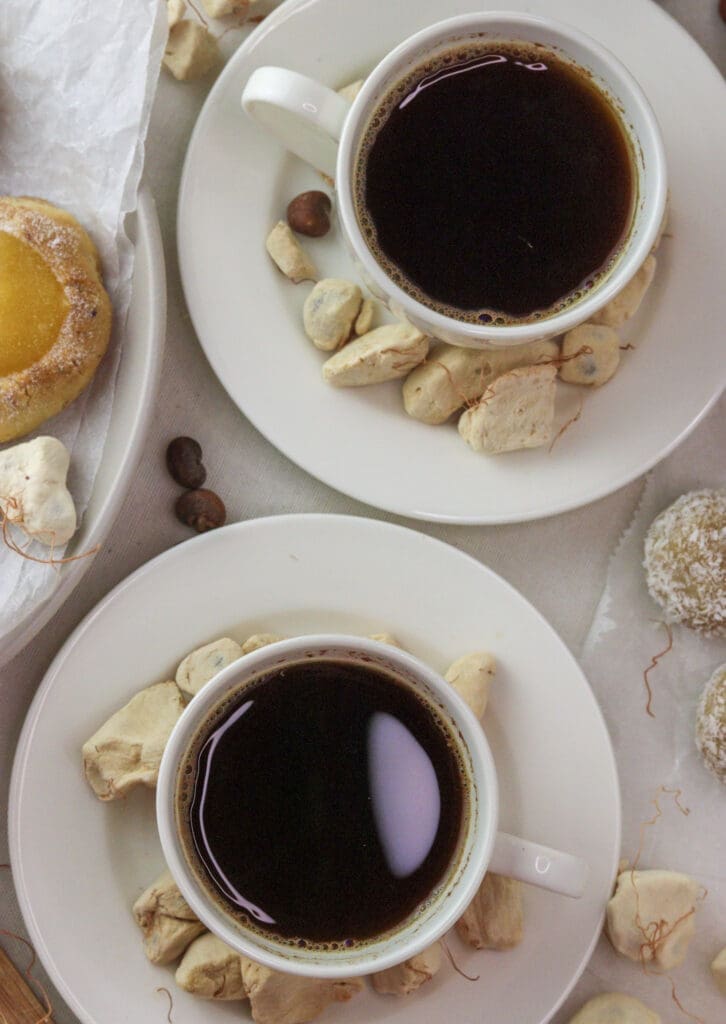
Why do baobab seeds need to be roasted
Not long ago, I came across a YouTube video of a guy trying to grind raw baobab seeds into coffee. He not only broke his grinder, but the look on his face when he tasted his “magic brew” was not a happy one.
Raw baobab seeds? Bitter, hard, and basically inedible. When baobab seeds are roasted, their sharp, raw bitterness softens, and they take on a rich, nutty, almost chocolate‑like depth. The colour deepens into that familiar coffee‑brown, and once roasted, they become easy to grind.
It also makes the coffee safe. Raw baobab seeds contain cyclopropenoid fatty acids (CPFAs), which can be harmful in high amounts. Around 200 °C, these compounds break down quickly. Roasting for 55–80 minutes at that temperature results in those levels dropping well below the safe limit.
Meanwhile, healthy fats like oleic and palmitic acid actually increase, making the coffee richer in healthy compounds. In other words, it’s not just better tasting — it’s better for you. That 55–80‑minute sweet spot gives you the best flavour and the most health‑boosting benefits.
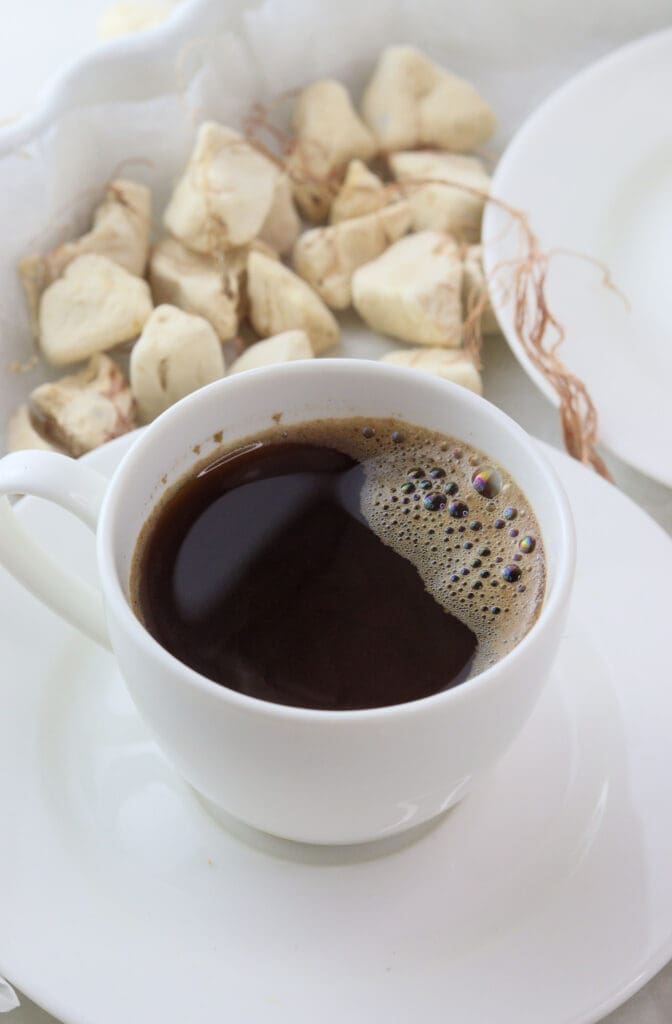
How to make baobab coffee at home
STEP 1: Start by soaking your baobab pulp with seeds in a bowl of water for at least an hour, or longer if the pulp is especially dry. Once it’s nice and soft, you can remove the seeds by squeezing the pulp gently with your hands.
Or, if you’d rather not get messy, use a spatula or big spoon to stir and press the pulp against the sides of the bowl. Either way, the seeds will come loose easily once everything is fully soaked.
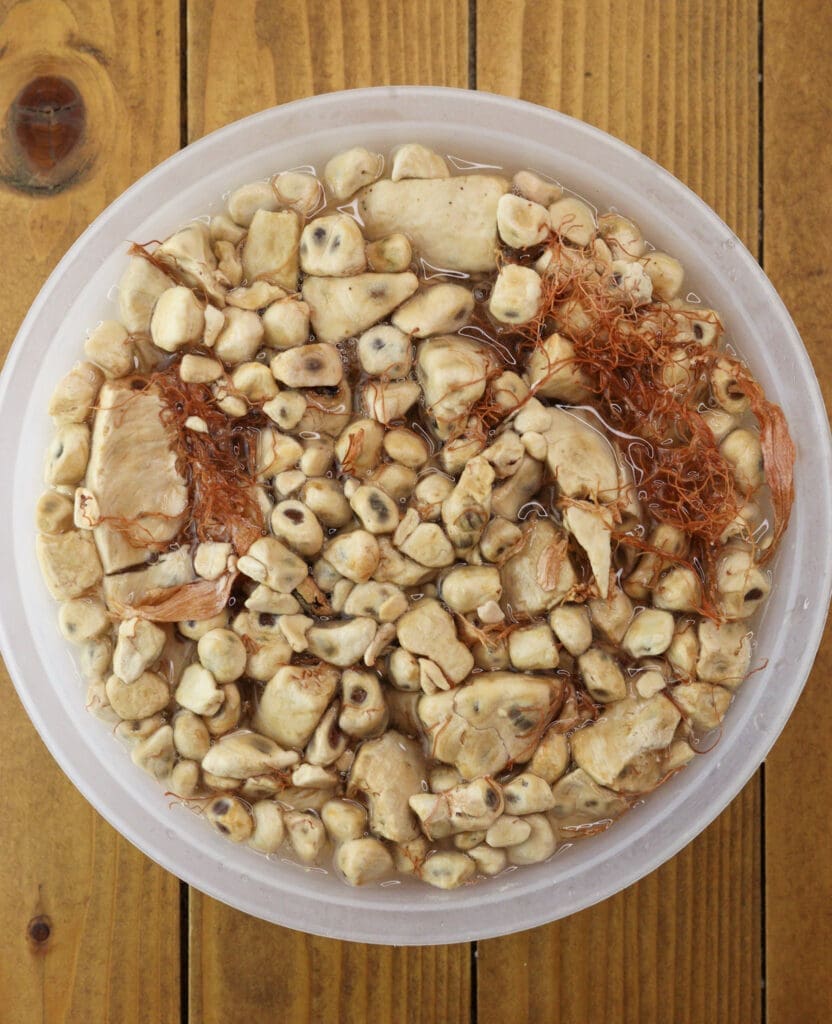
STEP 2: Use the soaked pulp to make baobab juice, then clean off any bits of fruit and fibers still clinging to the seeds. Give the seeds a good rinse before straining them thoroughly.
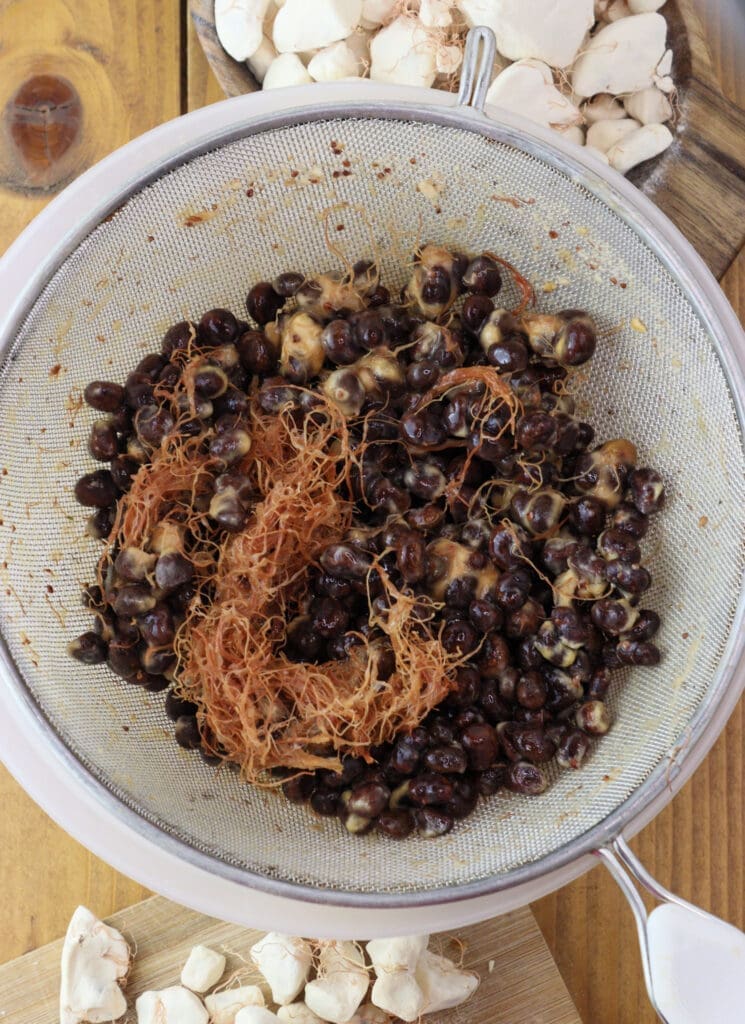
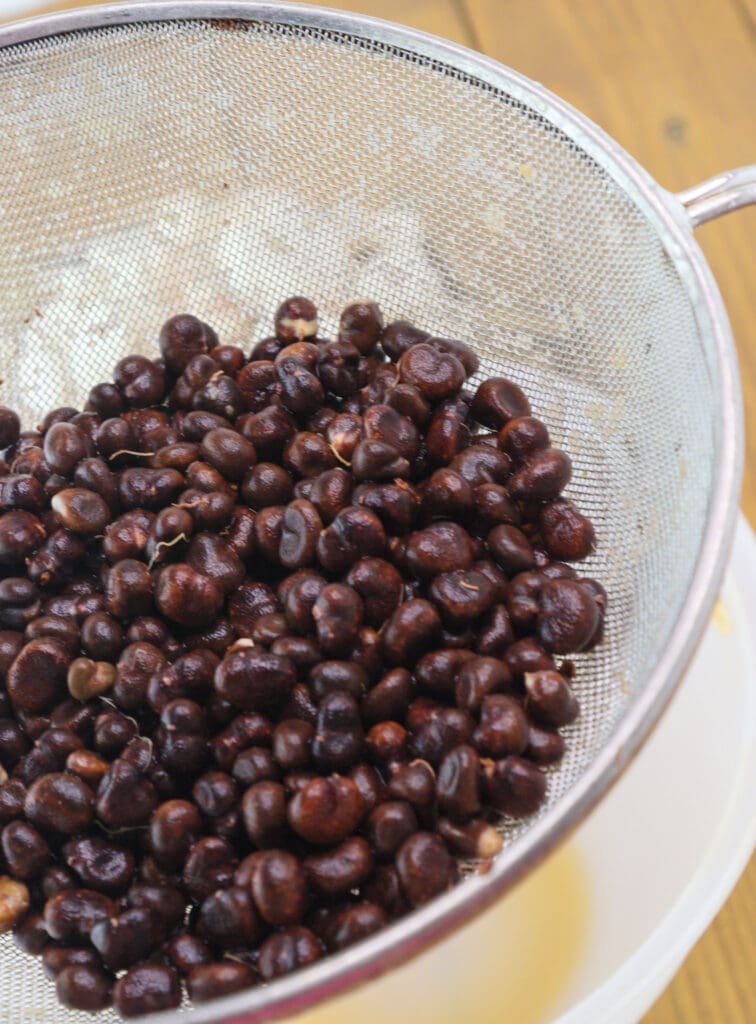
STEP 3: Spread the seeds out to dry in the sun — it’ll usually take a full day if the weather’s good. You’ll know they’re ready when their color turns lighter and they feel bone dry to the touch. Don’t skip this step — roasting damp seeds can cause your coffee to spoil quicker.
Once they’re completely dry, preheat your oven to 392°F (200 °C). Lay the seeds out on a baking sheet, ready for roasting. From 2 cups of dry baobab seeds (which weigh around 320 grams), you’ll get around 37 tablespoons of baobab coffee.
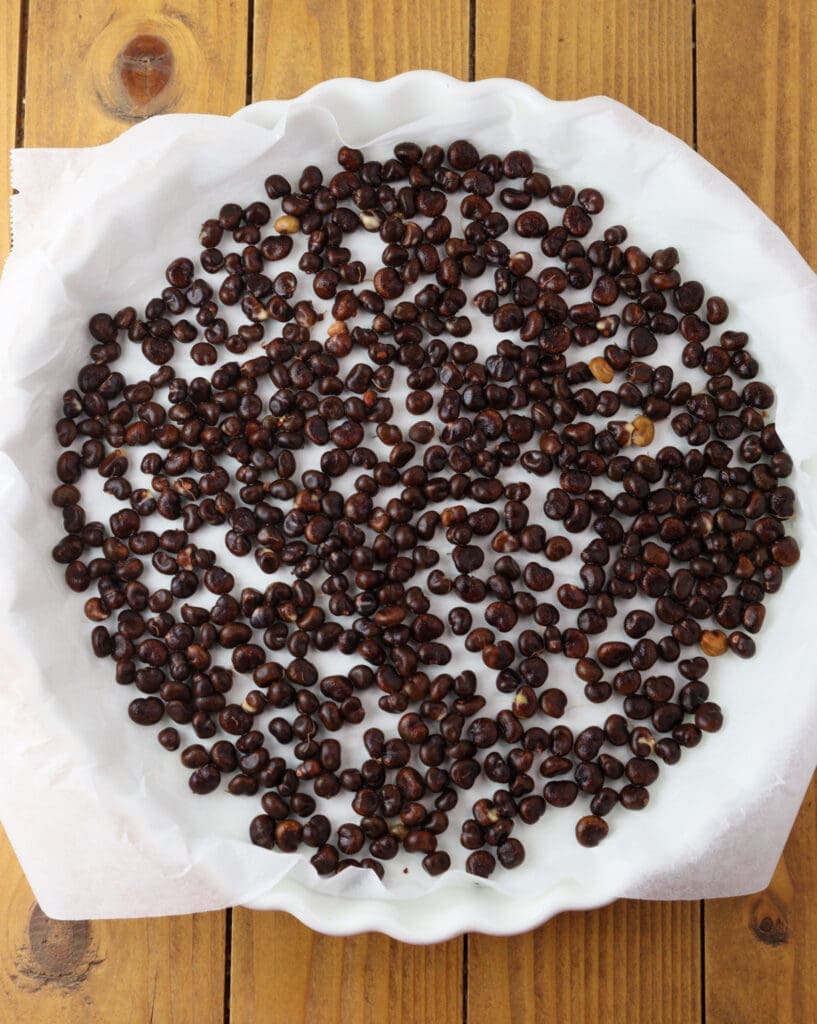
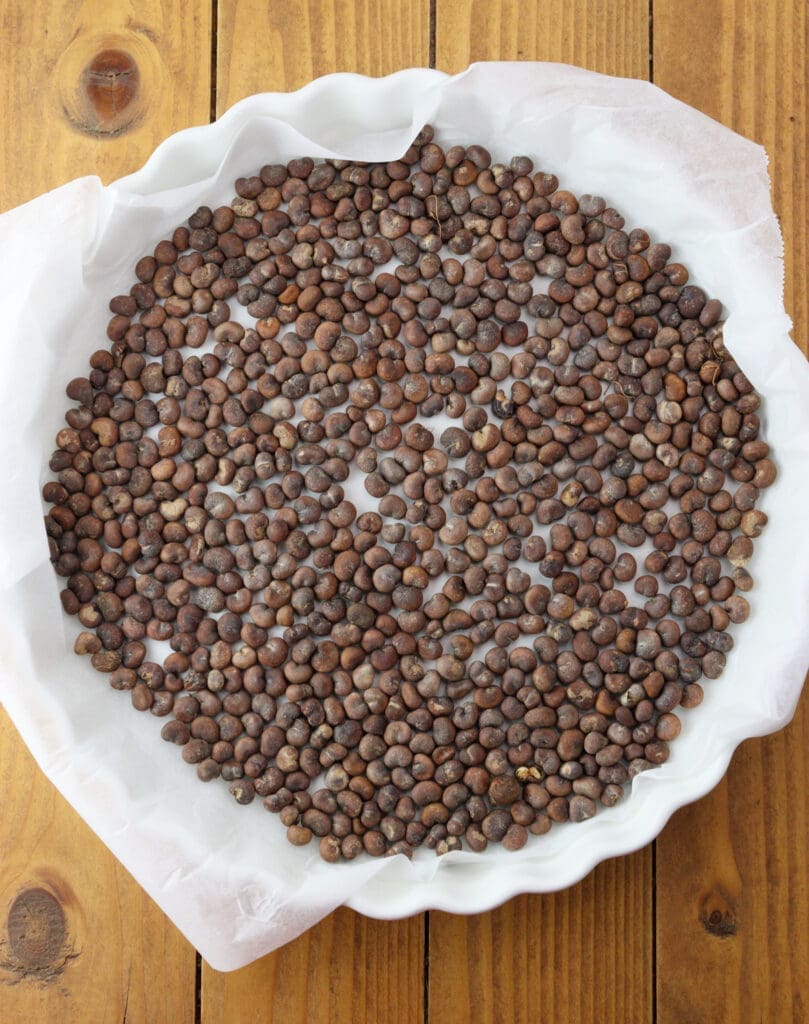
STEP 4: Roast the seeds for 50 to 60 minutes at 392°F (200 °C). Since that’s a fairly high temperature for small seeds, it’s a good idea to loosely cover them with parchment paper to keep them from burning. Once they’re roasted, let them cool completely to room temperature before grinding.
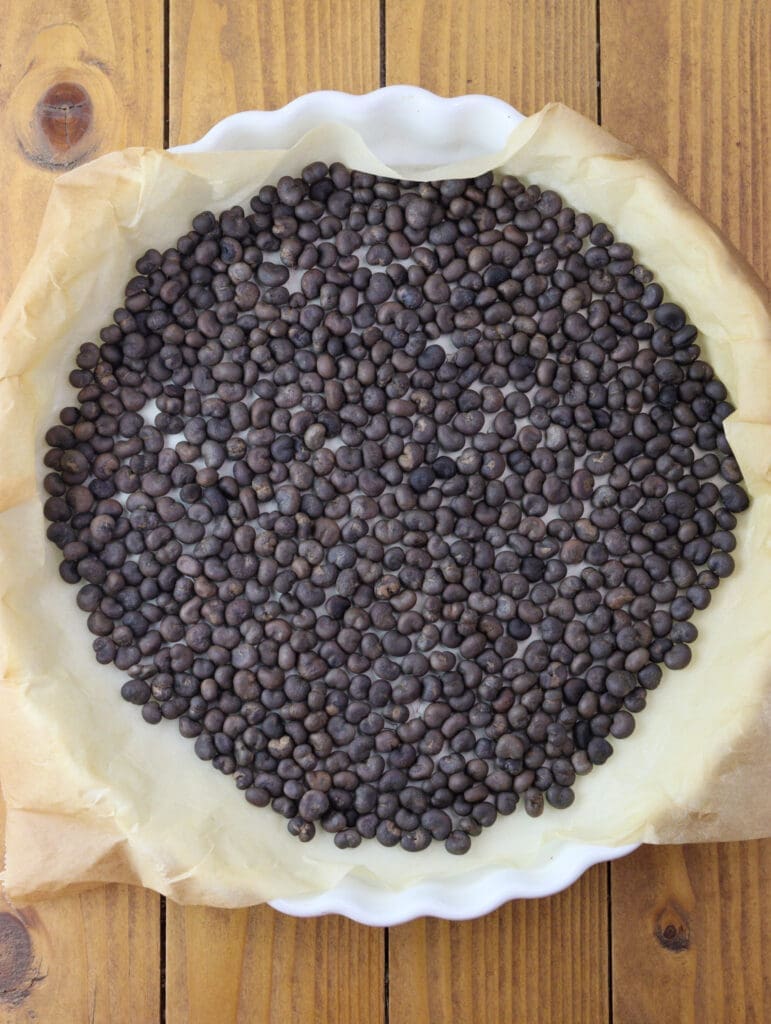
STEP 5: Grind the roasted seeds in a coffee grinder — we used an old hand-me-down one that needed a few rounds to get through the whole batch, but it did the job perfectly. Once roasted, the seeds are much easier to break down, and you’ll have a fine, fragrant powder in about ten seconds per load. The smell at this stage is amazing — nutty, and a little chocolate-like.
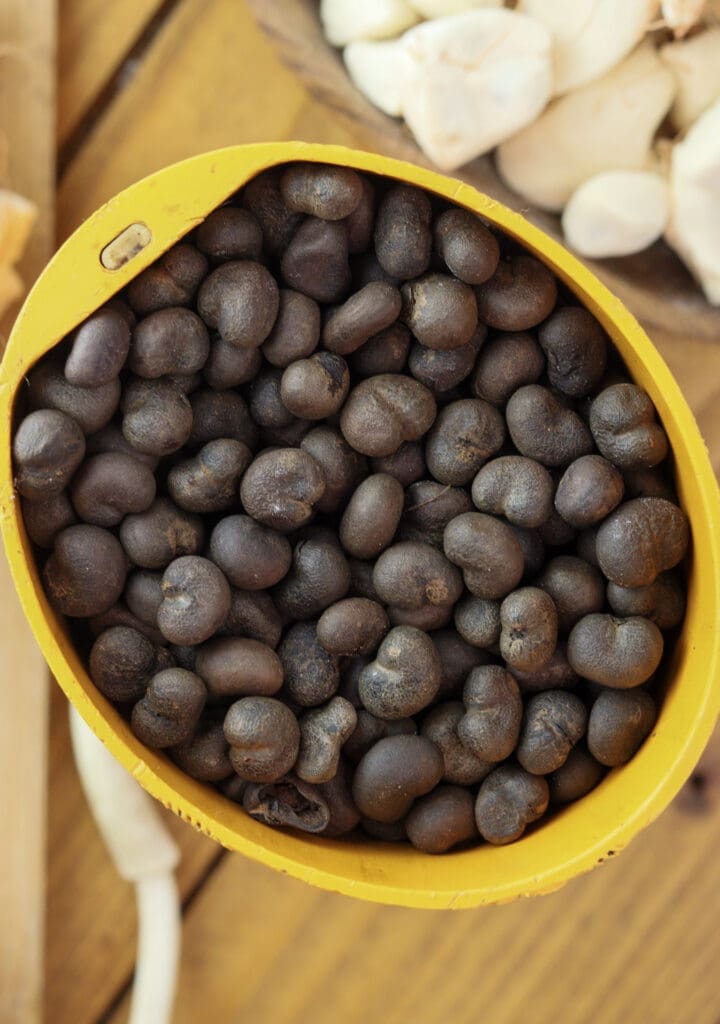
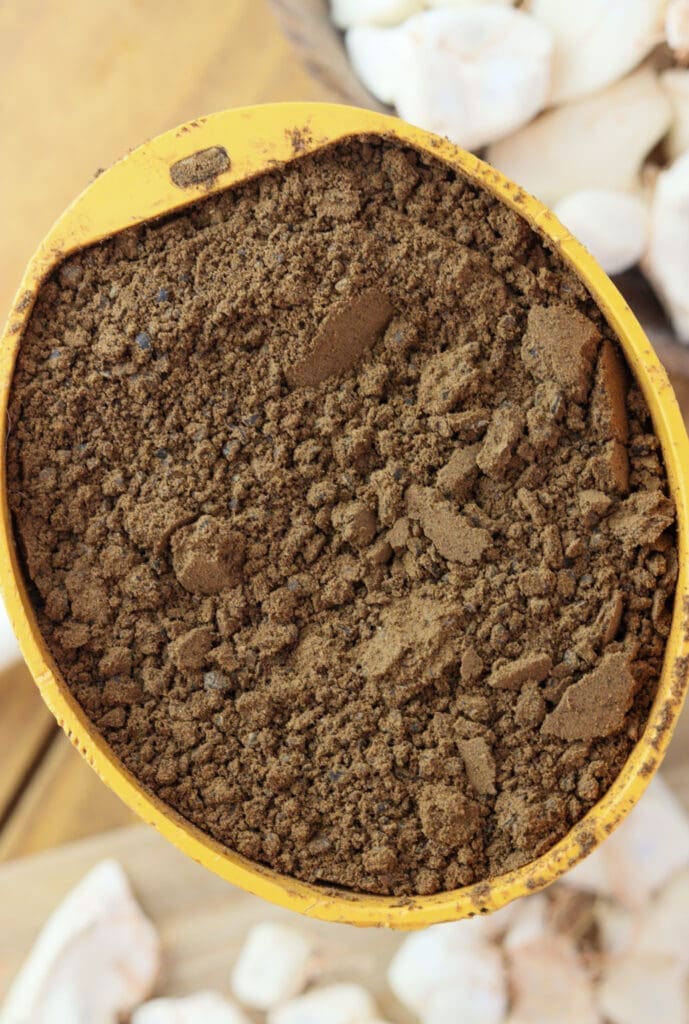
STEP 6: Store your baobab coffee in an airtight container or glass jar. Just make sure it’s completely cooled before sealing it — trapping any leftover heat or moisture can make it lose freshness faster.
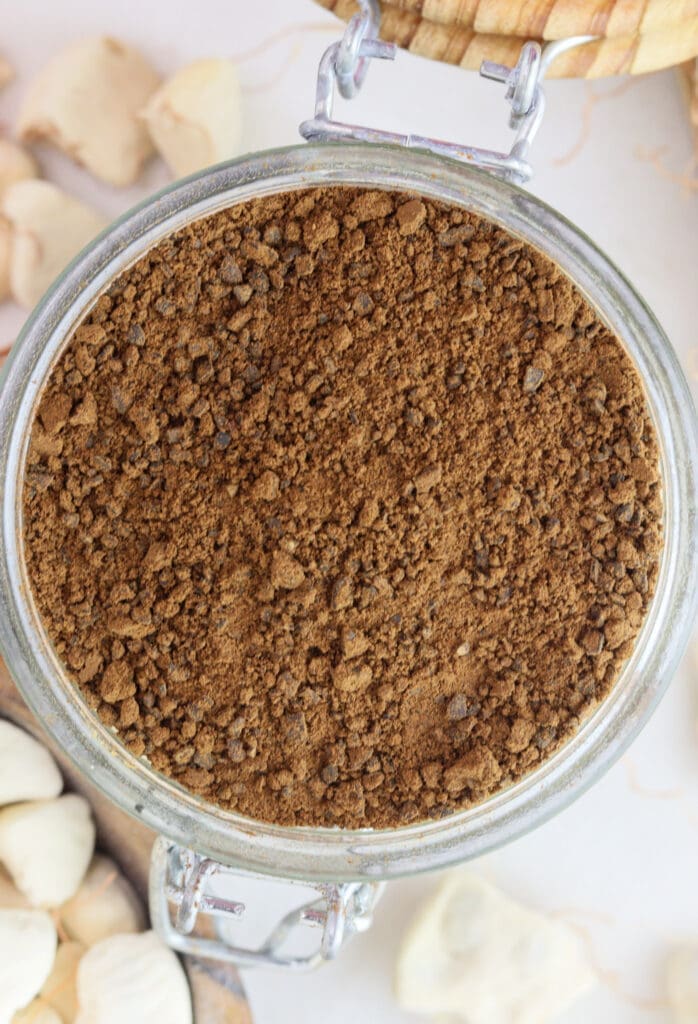
STEP 7: To brew a cup, mix 1–2 tablespoons of baobab coffee with a cup of freshly boiled water. Adjust to taste — more coffee will give you a bolder flavor and a deeper, richer color.
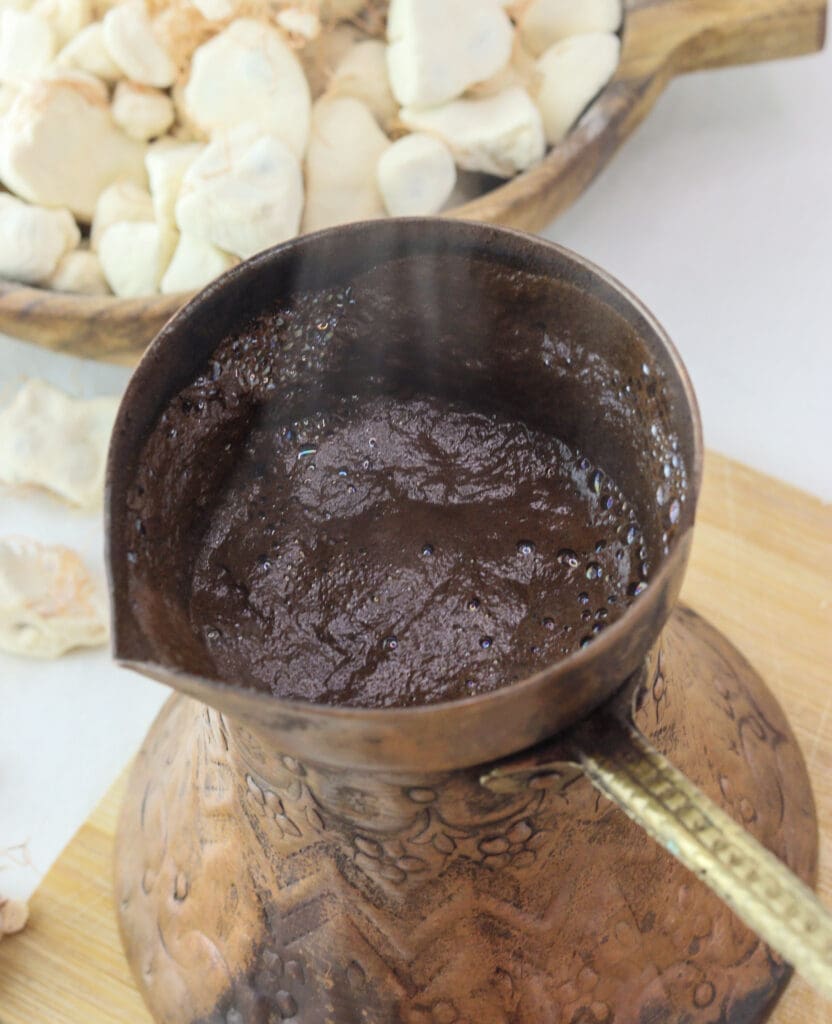
STEP 8: If you like, add a splash of milk or heavy cream — or even better, creamy coconut milk or coconut cream for a tropical twist. And that’s it — your delicious baobab coffee is ready to enjoy!
We love serving it with baobab cookies, or for a healthier treat, gluten-free coconut baobab bites or our delicious baobab bars with white chocolate.
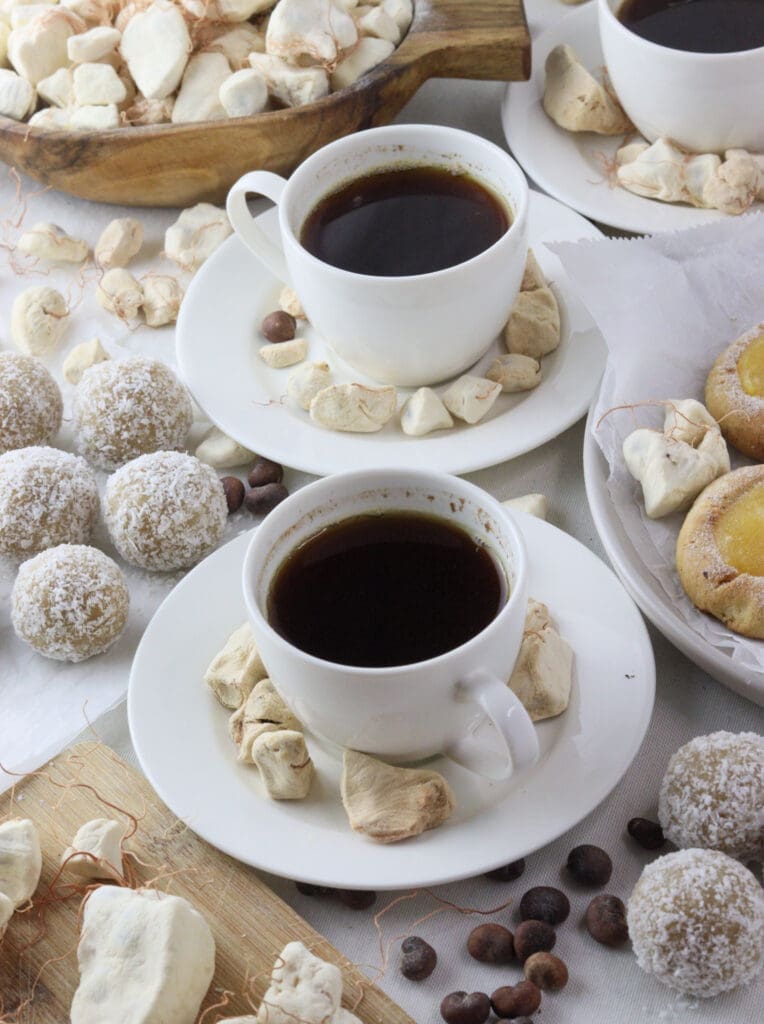
Recipe notes to remember
Dry the seeds completely before roasting. Even the slightest moisture can dull the flavor and cause them to steam instead of roast.
Don’t skip the roasting. It’s not just about flavor — roasting changes the seed’s natural compounds, making the coffee safe to drink.
Keep an eye on the roasting time. Around 55–60 minutes at 392°F (200 °C) seems to be the sweet spot, but definitely make sure the roasting time isn’t shorter than 30 minutes.
Cover the seeds. A loose layer of parchment paper keeps the heat even and prevents scorching.
Grind while they’re fresh. Baobab seeds are easiest to grind right after cooling. The fresher you grind them, the better the aroma and flavor.
Enjoy any time of day. This brew is naturally low in caffeine, so you can happily sip it in the afternoon or evening without the jitters.

Storing your baobab coffee
Once your baobab coffee has cooled completely, keep it in an airtight container or a glass jar with a tight lid. Store it somewhere cool, dark, and dry — away from sunlight and moisture. For the best flavor, enjoy it within 2–4 weeks. You can still drink it after that, but the aroma and taste will slowly fade.
If you want to store it longer, treat it like regular coffee — use vacuum-sealed storage to lock that wonderful aroma for months.

Baobab coffee FAQs
Baobab coffee has a cozy, nutty flavor with a touch of dark chocolate and a gentle, earthy bitterness, like a light roast coffee with roasted hazelnuts. It’s naturally smooth, without the sharp acidity of regular coffee, and fills the air with a soft, cocoa-like aroma as it brews. Add a splash of milk and it turns velvety, with a hint of caramel in the taste.
Baobab coffee is naturally low in calories and caffeine, and it’s rich in antioxidants and fiber, which can help support digestion and keep you feeling full for longer. While it’s not a magic weight-loss drink, swapping it for high-calorie, sugar-laden beverages can be a helpful step toward a healthier routine.
Theoretically yes, you can grow baobab in parts of the US, but only in warm climates like southern Florida, southern Texas, or Hawaii. They don’t tolerate frost and are extremelly sensitive to low temperatures, so in cooler areas you’d need to grow them in a large pot and bring them indoors over winter. Keep in mind, baobabs grow very slowly and can take many years—sometimes decades—before producing fruit.
Baobab recipes
Baobab Coffee
EQUIPMENT
- 1 baking sheet (or a roasting pan)
INSTRUCTIONS
- Soak the baobab pulp in a bowl of water for at least an hour — longer if it’s extra dry. Once it softens, separate the seeds by gently squeezing the pulp in your hands, or use a spatula to press and stir against the bowl until they come loos.e
- Make your baobab juice from the softened pulp, then clean the seeds of any leftover fruit or fibers. Rinse well and strain thoroughly.
- Spread the seeds out in the sun to dry completely — usually a full day in good weather. They’re ready when they’re lighter in color and feel bone dry. Once dry, preheat your oven to 392 °F (200 °C) and arrange them on a baking sheet.
- Roast for 50–60 minutes, loosely covered with parchment to prevent burning. Cool completely before grinding.
- Grind the roasted seeds in batches until you have a fine, fragrant powder.
- To brew, mix 1–2 tablespoons with a cup of hot water. Adjust for strength — more coffee gives a richer flavor and deeper color.
- Add milk, cream, or coconut milk if you like. Serve and enjoy!
NOTES
NUTRITION
This recipe was featured at My Wee Abode, Creative Jewish Mom and Esme’s place.
If you tried our baobab coffee, drop a comment — we’d love to hear how yours turns out!
And don’t forget to give it some wings – share and spread a little baobab love ❤️




I didn’t even realize that the baobab tree had edible products!
Hi Joanne, yes — almost every part of the baobab tree can be used. The fruit contains a naturally dried pulp inside a hard shell, which can be used to make juice, cookies, snack bars, and other desserts. The seeds can be pressed for oil, roasted and ground as a coffee substitute, or used as a natural mosquito repellent. The leaves are eaten as a vegetable similar to spinach and are also prepared as a tea in various regions of Africa. If you’re interested in trying it, we have several baobab recipes you can explore.
Mariama, I love this! I found this very interesting. We enjoy our daily cup of coffee, and this sounds like an excellent alternative.
So happy to hear you liked it! Baobab coffee really is such a cozy, caffeine-free alternative. I absolutely adore the chocolate taste. It’s actually wild to think how many seeds get tossed, when they’ve got so much potential packed inside and so many great things can be made from them.
Perfect way to add a little something extra to your morning cup. Thanks for sharing and for joining Fiesta Friday party!
It’s been a pleasure, thank you for stopping by!